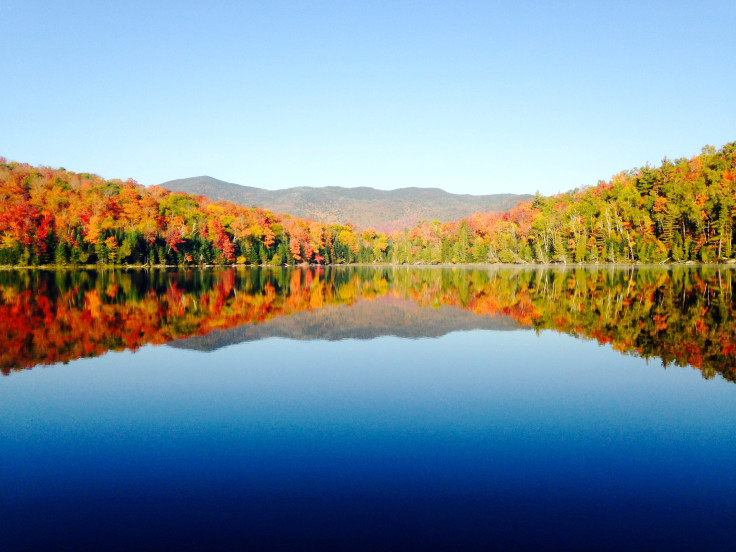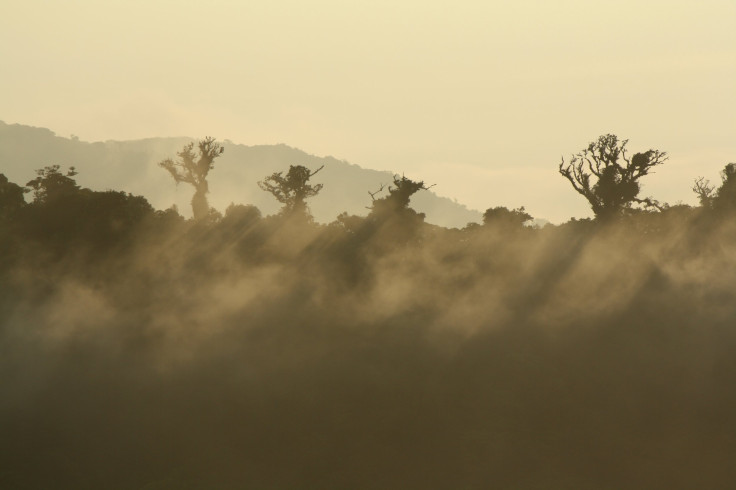How Many Trees Are There In The World? Scientists Have A New Estimate And It’s Way More Than They Thought

New research reveals there are 3 trillion trees in the world -- far more than scientists previously thought. That's great news for conservationists and ecologists, who now have a clearer picture of the forests they aim to preserve. Now the bad news: The data, compiled as part of the largest-ever survey of the world's forests, means that every new tree that is planted plays a smaller role in the global fight to capture carbon emissions.
A team of researchers have completed the momentous challenge of counting all the world’s trees and found that there are about 422 trees for every person on earth. That number greatly overshadows the last estimate of about 400 billion trees, and it will likely appear in climate models and be cited in conservation plans for years to come. Trees are an important ally in humanity's effort to rein in carbon emissions because trees capture carbon dioxide from the atmosphere and convert it into woody biomass for their branches and trunks through a process known as carbon sequestration. Their results were published in the journal Nature Wednesday.
Thomas Crowther, the lead researcher and a postdoctoral fellow at the Yale School of Forestry and Environmental Studies, said that even though the world has more trees than previously believed, humans aren't off the hook when it comes to conservation. Quite the opposite, actually. Previous climate and carbon sequestration models may have underestimated the number of trees currently soaking up global carbon emissions. This count offers scientists a starting point to retool climate and sequestration models and possibly revise their expectations for how much carbon a tree can absorb.
"We need to start identifying patterns of trees and numbers of trees and sizes of trees before we can determine how much carbon is stored in ecosystems and understand carbon storage and recycling in current and future scenarios," he said.
The study offers no insight into the girth or wood density of trees -- data which would be necessary for scientists to understand how much carbon a single tree or patch of forest might sequester -- but the count does suggest that the impact of any single tree on carbon sequestration is much smaller than once thought when compared to the whole of the planet's forested land.
"The large jump in estimated numbers of trees is surprising," said Van Kane, a forest researcher at University of Washington. "Tree counts by themselves -- since they're so dominated by small trees, many of which won't survive -- do not tell us a whole lot about ecosystems, but we can look forward to pairing this information with our worldwide distribution of biomass, which is dominated by large trees, to try to get new views on the world's ecosystems."
For that reason, this count raises the bar for any company or organization seeking to combat climate change with tree plantings. For years, campaigns such as MillionTreesNYC have busily recruited volunteers in cities across the U.S. to sequester carbon from the atmosphere by planting scores of trees. Experts have called such efforts a poor investment when compared with other reforestation projects, since New York City trees cost up to $3,500 to plant and maintain. Now, any such project will have to contend with a new figure that suggests it may take a lot more trees to put a dent in global carbon emissions than expected.
Crowther said the research also underscored the dramatic impact that people have on forests. Across all forest types, the greatest predictor of lower tree density was nearby human development. In particular, the scope of the project offers a sobering new perspective on deforestation. The researchers plugged their new count into estimates on annual forest loss to calculate that each year, people cut down over 15 billion trees. They said the total number of trees in the world has dropped by 46 percent since the beginning of human civilization.
"The more people you have, the more human activity you have -- the fewer trees you have," he said. "Everything we want is what forests want, and if we weren't there, forests would be there."
The study also exposed one surprising forestry trend that was previously obscured. The group found that tundra and boreal regions have the greatest tree densities of any region in the world -- even higher than the tropics. Glenn Juday, a forest ecologist at University of Alaska Fairbanks, said this may be because trees tend to be smaller at higher latitudes while trees in the tropics are very thick and take up more space.
"It makes sense from the standpoint that the low productivity in the boreal region means that the average size of trees at maturity is smaller, so as a result, more trees can fit within a given area," he said.
Tallying up the number of trees on Earth is no easy task: It requires steadfast resolve in the face of skepticism, an obsession with acquiring tree density data from obscure patches of the globe and even a clever strategy for accessing data withheld by the Russian and Chinese governments.
Crowther became obsessed with trying to count the Earth’s trees when he noticed mismatched guesses for global tree population in the field. Earlier estimates suggested there may be around 400 billion trees in the world. But when a group of ecologists and foresters surveyed the Amazon in 2013, they found 390 billion trees in that region alone.
Hans ter Steege, who led that Amazon estimate as a botanist at Naturalis Biodiversity Center in the Netherlands, said it's "a fascinating study." His team collected 1,170 data points for his analysis, which is less than one-half of 1 percent of the points included in the updated estimate.
But when Crowther first proposed his idea for approximating the number of trees in the world while working as a postdoctoral fellow at Yale, his mentors were skeptical. They only bought into the project after he gathered hundreds of thousands of data points.

To arrive at the estimate, Crowther and his collaborators analyzed 429,775 data points on tree density from forest plots in more than 50 countries on every continent except Antarctica. For some countries, such as the U.S. and European nations, this data was readily available through universities or forestry department websites, but institutions in Russia and China proved to be far more secretive.
"That level of data-sharing would be a very useful thing from a scientific perspective, given that Russia has more trees than any other country and twice as much as Canada, which is the next biggest," he said.
So Crowther and his team had to find scientists in those countries who were willing to share their tree density studies. Crowther also had to request data from a small section of tropical coniferous forest in Honduras that had never before been sampled. The team threw out any data that didn’t measure trees to their standard of more than 10 centimeters in diameter at chest height.
They sorted the remaining studies by region and elevation into categories such as boreal, desert and tropical grasslands. Based on these groupings, they found the expected tree density for each type of forest. Then they used images from satellites to estimate how many acres of each forest type existed on the planet. By combining the acreage with the tree density estimates, they calculated the approximate number of trees in the world.
"Pulling all this data together is a massive amount of work, and I congratulate them for it," Kane at University of Washington said. "Now we need to meld these tree counts with our estimates of biomass to see what we can tell about forests on smaller scales."
The key to their study was the team’s use of tree density measurements. This allowed them to fine-tune their estimate to a greater degree than previous guesses, which relied primarily on satellite images even though it's often hard to tell whether a forest plot has 50 or 100 trees when looking down at a sea of canopies from above.
In addition to the benefits for climate research and carbon sequestration efforts, Crowther added that the new estimate also sharpens an otherwise fuzzy area in the picture of the planet held by scientists and the general public.
"My opinion is that it's just valuable to have a fundamental understanding of the Earth," he said. "It's really nice to know a feature of the planet we live on."
© Copyright IBTimes 2024. All rights reserved.





















